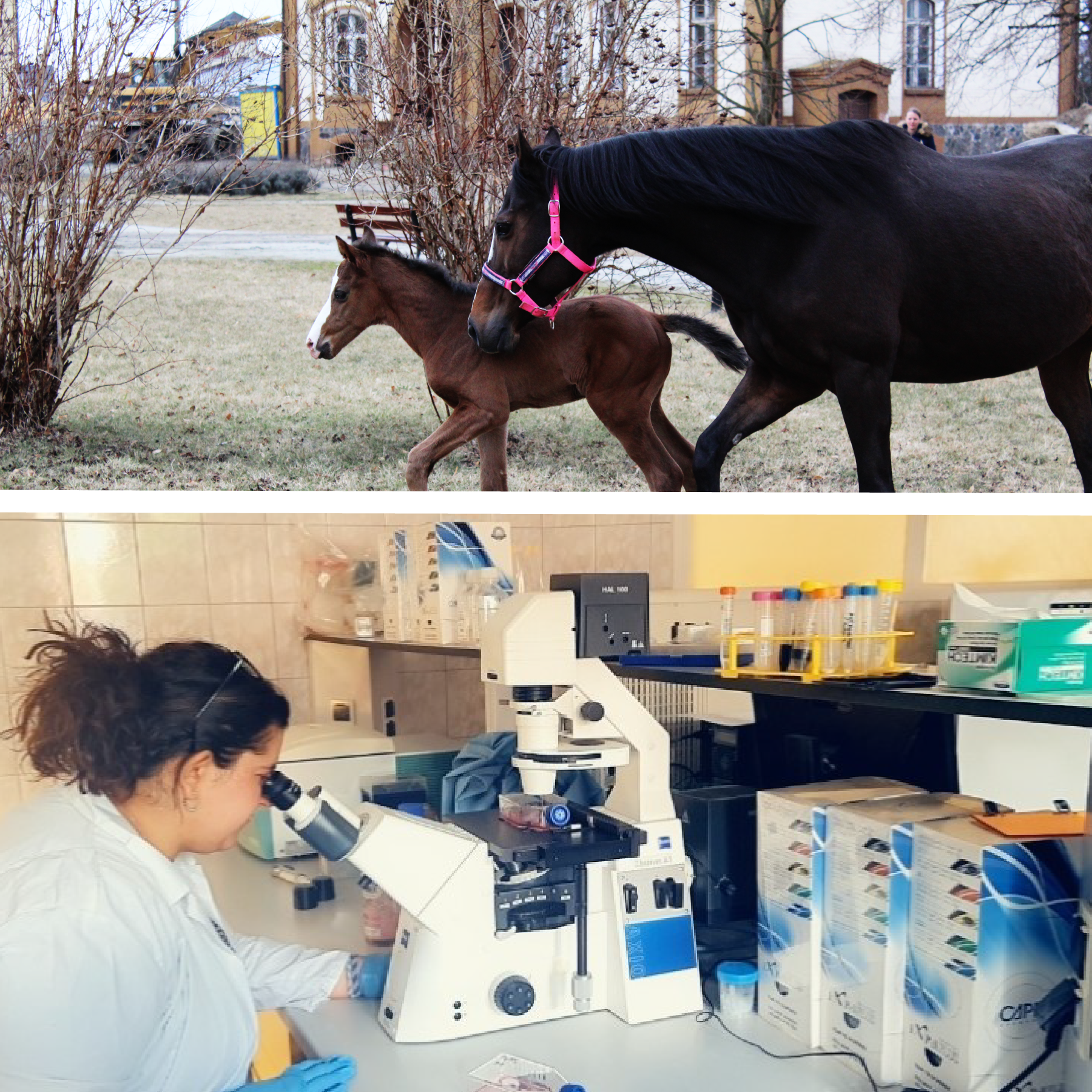Nabila, who has scientific traditions in her family, learned about the UPWr Doctoral School from her sister, a professor assistant working closely with professor Marycz at the UPWr. She told her about her life and work here in Poland. Nabila thought she was lucky to be here and work in advanced science because back in Algeria where they come from, there are no such opportunities.
– My sister tried to find a way for me to come here and finish my studies. Prof. Marycz told me about the Doctoral School and the possibility of starting PhD studies without a master's degree, but you need to have some significant scientific achievements. So I came to Poland to get training in the Department of Experimental Biology. Then I decided to apply to the Doctoral School. I was not sure if I would get accepted without the master’s degree, but I worked hard and I took this challenge to gain the necessary experience – says the doctoral student.
Prof. Marycz involved Nabila in the work on horse diseases. And now her main topic of study is the use of sex hormone binding globulin (SHBG) as a therapeutic factor in the horse disease – equine metabolic syndrome (EMS). SHBG is a protein mainly secreted by the liver and its main role is to bind steroids in order to regulate their actions in the organism.

EMS is a metabolic and endocrine pathology affecting horses and ponies, which is favoured by overweight and lack of exercise. It is the second death cause in horses and so far there is no specific and effective treatment for this disease, which shares many similarities with human metabolic syndrome. EMS leads to insulin resistance, increased adiposity, low-grade inflammation and ultimately to laminitis, heart disorders, lipid metabolism dysregulation and liver dysfunction.
– I am working on adipose tissue stem cells. I study the molecular pathways underlying the EMS condition that include inflammation. There are studies showing that low systemic levels of SHBG are associated with a general metabolic disruption in animals and humans. My goal is to determine whether this low level of circulating SHBG is linked to the onset of inflammation related to EMS. There are no studies about this so far – says Nabila.
– What I like about the Doctoral School is that we have both classes and lecturers. In some countries, you do not have them and you do only the research. That is why I really like the programme of my studies. I work in a team and I have regular contact with my supervisor. We meet every week to discuss my work and my thesis. Also, in the DS we have many possibilities for training and conferences, which is the advantage of the school – says the doctoral student.
In the future, Nabila plans to do a postdoc somewhere else to see how different teams work and learn new things about biology. But she admits that she likes Wrocław and would like to stay here for longer.